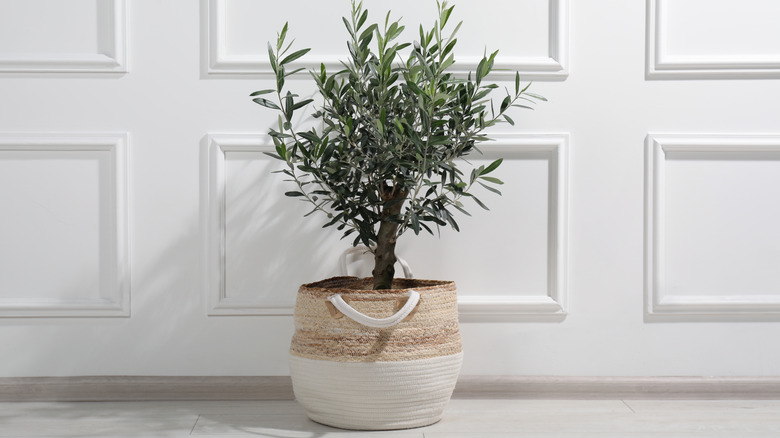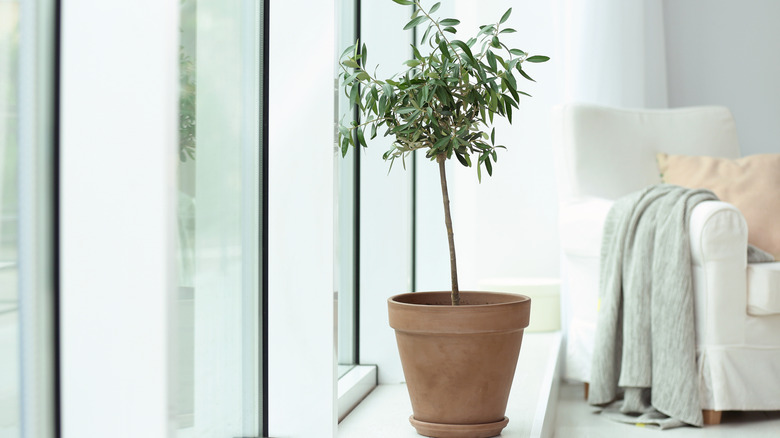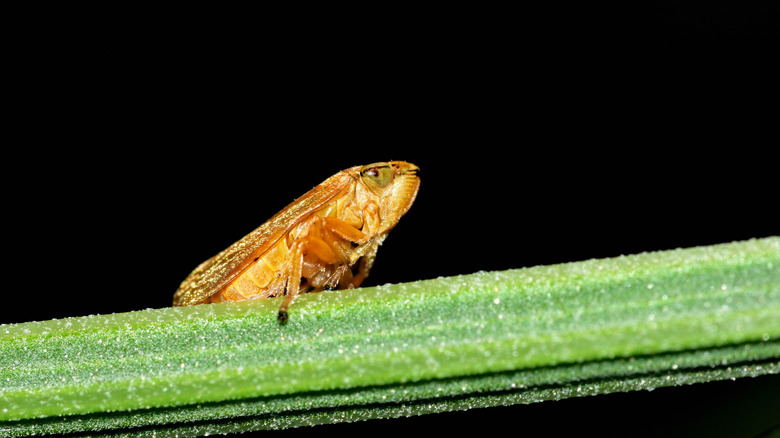Avoid These Mistakes For A Thriving Indoor Olive Tree
We may receive a commission on purchases made from links.
Have you ever wondered if you can successfully grow an olive tree indoors? Sure, you can grow an olive tree (Olea europaea) indoors, but you won't have the same results as one grown outdoors. These trees have a long life in the wild while bearing their healthy and delicious fruit that has become a staple of the Mediterranean diet. Your indoor tree will last about eight to nine years without bearing fruit, but they're still beautiful and ideal for pet parents who don't want toxic vegetation around. As you learn how to grow and care for olive trees, beware that there are a few common mistakes that can reduce their lifespan.
To start, learn about the different species of olive trees so you can pick the correct one for your space. Experts recommend sticking with a non-fruiting dwarf species for indoors. Not placing them in the right container is detrimental to their growth. Therefore, choose containers wisely as they should be large enough for the roots while allowing soil to drain correctly. If you grow your indoor olive tree from a cutting, take it from a tree that has already fruited. Be patient with time and generous with water as they need daily hydration for a few months before roots take hold.
Don't assume that your indoor olive plant is safer from pests than your outdoor tree. So, check them regularly and use proper prevention methods. It can outgrow its container, so repot as necessary. Remember, olive trees are native to the Mediterranean and thrive in warmer climates. Failure to have a properly controlled environment for this type of tree can turn its beautiful, slick leaves brown.
Don't block the light
Of course, a plant native to the Mediterranean is used to consistently sunny, warm weather with a certain amount of humidity. The hot, dry summers and cool, moist winters prominent in USDA Hardiness Zone 8 are ideal for them. To keep your olive tree healthy inside, give it full sun, but be mindful about leaf placement. Keep the leaves away from the window surface as it can cause lef burning. Without proper sunlight, you'll notice your tree's leaves will begin to drop off during the winter.
Therefore, if you live in a location that can't provide full sun all year, you should be using grow lights to do so. Whether your plants receive natural light from a window or artificial light, rotate them about 90° weekly to ensure full coverage. Fluorescent lights or LED lights are ideal artificial lighting means. Ideally, they should have at least 6 to 8 hours of light a day from either source.
When winter comes, consider using something similar to YuanWen LED Grow Lights. Another more inexpensive option is the ANDOHAI LED Full Spectrum Plants Lights. When you make the mistake of not ensuring proper light for your indoor olive plant, you also make it more susceptible to stunted growth and pests and diseases that can decrease its lifespan.
Don't let invaders overrun your olive plant
Don't assume that your indoor olive tree won't have to worry about pest invaders as an outdoor tree does. In fact, they're even more vulnerable to pest infestations. One of the reasons why they're more vulnerable to illness is they don't have natural predators, as their outdoor partners have to fight these pests off. What are some invaders to look out for and prevent? Spider mites, spittlebugs, scale insects, and fungal infections are the most common nuisances.
Scales are hard-shelled insects that can drain the tree's sap, causing it to weaken and stunt growth. You'll likely spot them on the underside of leaves, and they look like shell-like bumps. They love to feast on plants already in stress so keep your olive tree in optimal condition to prevent attracting them. When outside, ladybugs and certain wasps can help control them. However, without those natural predators inside, you can use a gentle blast of water, pruning heavy-infested branches, neem oil, or insecticidal soap.
Spittlebugs not only feed on the sap but can spread fatal bacteria known as Xylella fastidiosa. You may see little masses of frothy and sticky bubbles, which are the self-protecting excretions nymphs produce while feeding on the plant. The spittle or sticky secretions can damage the tree. As adults, the insects are brown, tan, or gray and resemble leafhoppers.


